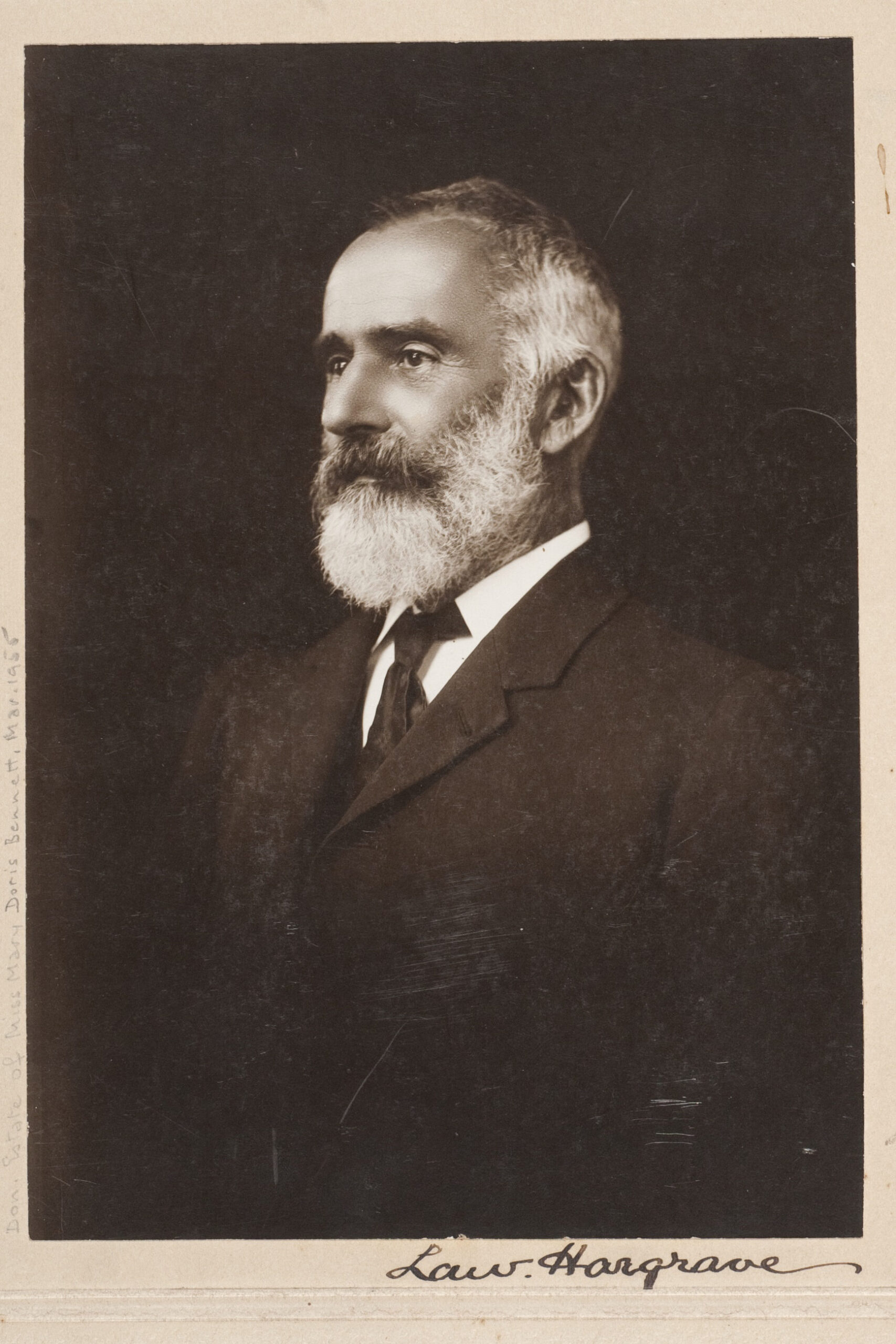Defining Moments in Australian History: Australia’s first piloted flight

In 1894, almost a decade before the Wright brothers celebrated the first powered flight, Australian inventor Lawrence Hargrave connected four box kites of his own design, added a seat, and flew 4.8m off the ground, proving it was possible to build a safe, heavier-than-air flying machine.
Hargrave was born in 1850 in Greenwich, England. His father, lawyer John Fletcher Hargrave, moved to New South Wales in 1857, and by 1865 secured a place on the Supreme Court bench. Later that year, young Lawrence also emigrated with his mother and siblings, and soon after arriving in Sydney joined the schooner Ellesmere as assistant to expedition leader Abraham Thompson on an exploratory circumnavigation of Australia. The Ellesmere journey left a positive impression on Hargrave but the time at sea kept him from his studies. Unable to follow his father into law, he was apprenticed in the engineering workshops of the Australasian Steam Navigation Company. Between 1872 and 1877 he worked as an engineer on six expeditions, earning a reputation as a respected explorer and cartographer.
Hargrave took a position at the Sydney Observatory in late 1878. During the next five years he observed the transit of Mercury and was involved in an attempt to observe the transit of Venus. The attempt failed due to poor weather. He also observed conditions related to the catastrophic volcanic eruption of Krakatoa in Indonesia. At the observatory, Hargrave designed and built adding machines to assist his astronomical calculations.
By 1883, Hargrave was enjoying an independent annual income of about £1000 due to his father’s land investments, which allowed him to fully commit to scientific research. He began experimenting with monoplanes, focusing on wing shape, and from 1887 worked on an engine‑powered aircraft able to carry a human. In 1889, after experimenting with 36 different designs, he developed a three‑cylinder rotary engine that became a prototype for the aircraft engines that dominated the first 50 years of powered flight.
During the 1890s, inefficient propeller design and the poor power-to-weight ratio of most engines meant aeronautical pioneers focused more on the study of gliding and wing design rather than powered flight. Hargrave made a number of monoplane gliders. Unhappy with their stability, he began to instead study box kites. “I am using kites, and find perfect stability can be got by making them of three dimensions instead of two,” he wrote. “Cellular kites do not confine their surface to one plane, but distribute it in various portions, forming cells through which the wind blows.”

Hargrave married Margaret Johnston in 1878 and the couple had six children together. In 1893 the family moved to Stanwell Park, between Sydney and Wollongong, where they owned property and coalmines. The area is well known for its winds favourable for gliding, and on the morning of 12 November 1894, Hargrave launched a linked series of four box kites off the town beach and climbed into a seat attached to the lowest kite. A strong gust propelled him into the air, but the kites remained steady in the buffeting winds because of their box design. Having proven human flight on a stable, multi‑winged craft was possible, he wrote, “The particular steps gained are the demonstration that an extremely simple apparatus can be made, carried about, and flown by one man…without any risk of accident.”
Hargrave’s designs were taken up by other inventors, including the French-American Octave Chanute, whose designs were later incorporated by the Wright brothers into their Wright Flyer, which, in December 1903, became the first aircraft to achieve powered flight with a pilot on board.
Hargrave’s interest in aeronautical experimentation continued throughout his life. His later research explored ways the curvature of wings could increase lift. His work strongly influenced the design of biplane aircrafts, and today he is recognised as one of the great pioneers of aeronautics.
Hargrave’s only son, Geoffrey, was killed in May 1915 during the Gallipoli campaign. Weeks later, on 6 July, Hargrave died of peritonitis following surgery in Sydney, aged 65.
‘Australia’s first piloted flight’ forms part of the National Museum of Australia’s Defining Moments in Australian History project.




